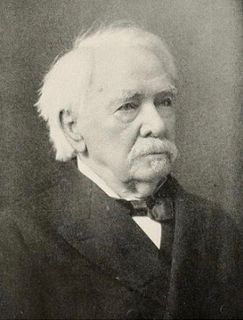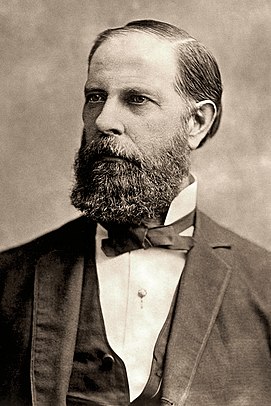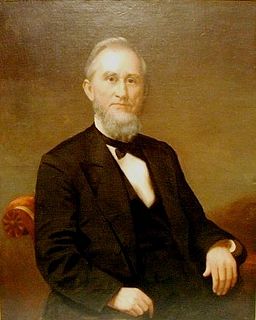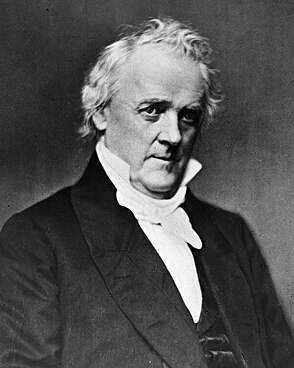| |||||||||||||||||||||
| |||||||||||||||||||||
| |||||||||||||||||||||
The 1859 California gubernatorial election was held on September 7, 1859 to elect the governor of California.

The Governor of California is the head of government of the U.S. state of California. The California Governor is the chief executive of the state government and the commander-in-chief of the California National Guard and the California State Military Reserve.
Since the beginning of the 1850s, issues regarding slavery had effectively split the state Democratic Party. Initially divided by pro-slavery Chivalrists and anti-slavery Free Soilers, by 1857, the party had split into the Lecompton and Anti-Lecompton factions. Lecompton members supported the Kansas Lecompton Constitution, a document explicitly allowing slavery into the territory, while Anti-Lecompton faction members were in opposition to slavery's expansion. The violence between supporting and opposition forces led to the period known as Bleeding Kansas. Splits in the Democratic Party, as well as the power vacuum created by the collapse of the Whig Party, helped facilitate the rise of the American Party both in state and federal politics. In particular, state voters voted Know-Nothings into the California State Legislature, and elected J. Neely Johnson as governor in the 1855 general elections.

The Lecompton Constitution (1857) was one of four proposed constitutions for the state of Kansas. It was drafted by pro-slavery advocates and included provisions to protect slaveholding in the state and to exclude free blacks from its bill of rights. It was overwhelmingly defeated on January 4, 1858 by a majority of voters in the Kansas Territory. The rejection of the Lecompton Constitution, and the subsequent admittance of Kansas to the Union as a free state, highlighted the irregular and fraudulent voting practices that had marked earlier efforts by bushwhackers and border ruffians to create a state constitution in Kansas that allowed slavery.

The Territory of Kansas was an organized incorporated territory of the United States that existed from May 30, 1854, until January 29, 1861, when the eastern portion of the territory was admitted to the Union as the state of Kansas.

Bleeding Kansas, Bloody Kansas or the Border War was a series of violent civil confrontations in the United States between 1854 and 1861 which emerged from a political and ideological debate over the legality of slavery in the proposed state of Kansas. The conflict was characterized by years of electoral fraud, raids, assaults, and retributive murders carried out in Kansas and neighboring Missouri by pro-slavery "Border Ruffians" and anti-slavery "Free-Staters".
During the 1859 general elections, Lecompton Democrats voted Latham, who had briefly lived in the American South, as their nominee for Governor. Anti-Lecomptons in turn selected John Currey as their nominee. The infant Republican Party, running in its first gubernatorial election, selected businessman Leland Stanford as its nominee. To make matters more complicated, during the campaign, Senator David C. Broderick, an Anti-Lecompton Democrat, was killed in a duel by slavery supporter and former state Supreme Court Justice David Terry on September 13. [1]

John Moore Currey was the eighth Chief Justice of California, and candidate for Governor of California in 1859.

Amasa Leland Stanford was an American tycoon, industrialist, politician, and the founder of Stanford University. Migrating to California from New York at the time of the Gold Rush, he became a successful merchant and wholesaler, and continued to build his business empire. He spent one two-year term as Governor of California after his election in 1861, and later eight years as a United States Senator. As president of Southern Pacific Railroad and, beginning in 1861, Central Pacific, he had tremendous power in the region and a lasting impact on California. He is widely considered a robber baron.

David Colbreth Broderick was an attorney and politician, elected by the legislature as Democratic U.S. Senator from California. Born in Washington, DC, to Irish immigrant parents, he lived in New York until moving to California during the Gold Rush. He was a first cousin of politicians Andrew Kennedy of California and Case Broderick of Kansas.



















